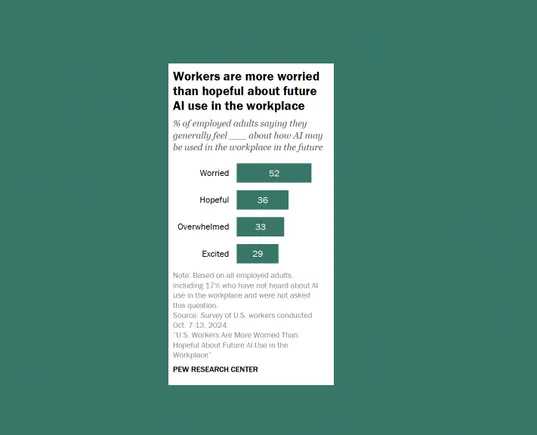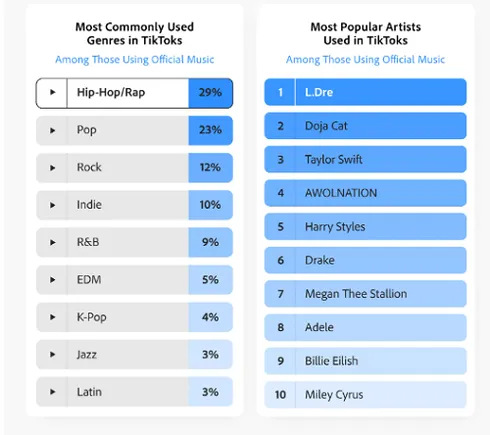In an era where technology has seamlessly woven itself into the fabric of our daily lives, the way we work has undergone a profound transformation. The traditional office, with its cubicles and water coolers, is giving way to a more flexible, digital, and boundary-less environment: the virtual workspace.
As companies across the globe rapidly adopt this new paradigm, it’s imperative to understand how it’s reshaping corporate culture, for better or worse. This article delves into the evolution, benefits, challenges, and the undeniable impact of virtual workspaces on the future of work.
Summary: 10 Facts about how virtual workspaces transforming the corporate culture
- Virtual workspaces are fundamentally reshaping the landscape of the modern business world, moving beyond a trend to a mainstay in corporate operations.
- The rise of technology, especially cloud technologies and collaborative platforms, has been instrumental in facilitating the shift to virtual environments.
- Companies are experiencing both the advantages of virtual workspaces, such as increased flexibility and cost savings, and the challenges, including technical issues and cybersecurity threats.
- Communication in the digital realm requires new norms and protocols, emphasizing clarity to avoid misinterpretations in the absence of physical cues.
- Leadership in virtual settings demands a different approach, with leaders needing to be more proactive, adaptive, and capable of fostering trust from a distance.
- Corporate culture and team cohesion, once rooted in physical interactions, now require innovative strategies to thrive in a virtual setting.
- Onboarding and training in virtual formats present unique challenges, necessitating a reimagining of traditional processes to integrate new hires effectively.
- Cybersecurity has become paramount, with companies investing heavily in robust security protocols to protect against data breaches and cyberattacks.
- The human element remains vital; businesses must ensure that virtual interactions still foster genuine human connections, camaraderie, and a sense of belonging.
- As the future of work continues to evolve, adaptability, empathy, and innovation will be key for companies aiming not just to adapt but to lead in this new era.
The evolution from traditional to virtual workspaces
Over the decades, the workplace has undergone a remarkable metamorphosis. There was a time when rigid structures, brick-and-mortar offices, and the physical presence of employees were the hallmarks of a professional environment. Yet, as the digital age dawned, spurred by the proliferation of the internet and a cascade of advanced technologies, a seismic shift began to reshape the contours of the working world. Pioneering innovations like cloud technologies, video conferencing tools, and collaborative platforms didn’t just supplement the traditional office; they revolutionized it, giving birth to the concept of the virtual online office.
These avant-garde virtual workspaces have ushered in an era of unparalleled flexibility. No longer bound by geographical constraints, employees now have the liberty to work from virtually anywhere, while also harnessing the power of real-time interaction with colleagues spread across the globe. This newfound freedom has tangible benefits: the drudgery of daily commutes is slashed, leading to significant time savings, and companies can realize substantial financial benefits by reducing overheads associated with physical spaces.
However, this evolution isn’t without its challenges. As the lines between personal and professional blur, companies grapple with preserving their corporate culture and fostering a sense of belonging and trust among remote teams. Building and maintaining trust in a predominantly digital realm requires innovative strategies and a reimagining of traditional team-building exercises.
Yet, despite these challenges, one thing remains crystal clear: the transition from traditional office setups to dynamic virtual workspaces is not just a temporary phase. It’s a transformative movement, one that promises to shape and define the trajectory of the modern working world for years to come.
The benefits of virtual workspaces
Having delved into the transition from traditional to virtual workspaces, it’s evident that this evolution isn’t merely a trend but a response to the myriad advantages these spaces offer. The modern working landscape, shaped by technological advancements and changing societal values, stands to gain immensely from these benefits.
Flexibility and Work-Life Balance
At the forefront of the advantages is unparalleled flexibility. Virtual workspaces allow employees to tailor their schedules, accommodating personal commitments and peak productivity hours. This adaptability often leads to a more harmonious work-life balance, a factor increasingly important to the modern workforce. No longer tethered to a desk from nine to five, employees can manage their time more effectively, leading to increased satisfaction, reduced burnout, and often, heightened productivity.
Cost Savings for Companies
From a financial perspective, virtual workspaces present a compelling case. Companies can realize substantial cost savings by reducing or eliminating expenses associated with physical office spaces – rent, utilities, maintenance, and more. This financial relief can be redirected to other critical areas, such as research and development, employee training, or even passed on as benefits to the workforce. In an increasingly competitive market, these savings can be the difference between stagnation and growth.
Extended Access to Global Talents
Virtual workspaces obliterate geographical barriers. Companies are no longer restricted to hiring talent within commuting distance but have an entire global talent pool at their disposal. This access not only ensures that businesses can select from the best and brightest, irrespective of their location but also promotes diversity. Diverse teams, as numerous studies have shown, lead to more innovative solutions and a broader perspective, essential in a globalized economy.
Environmental Friendliness through Reduced Commuting
The environmental implications of virtual workspaces are profound. With fewer employees commuting daily, there’s a significant reduction in CO2 emissions and traffic congestions. This shift towards environmental sustainability is not just good for the planet but also resonates with eco-conscious consumers and employees, further enhancing a company’s reputation and appeal.
In summary, the shift towards virtual workspaces is not just a fleeting trend but a reflection of the evolving priorities and possibilities of the modern world. These spaces, driven by technology and societal needs, offer a blend of flexibility, economic efficiency, global collaboration, and environmental responsibility. As businesses and employees navigate the challenges and opportunities of the 21st century, embracing the benefits of virtual environments may well be the key to fostering innovation, sustainability, and overall success in the ever-changing global landscape.
The challenges and how companies are tackling them
The allure of virtual workspaces is hard to ignore in today’s fast-paced digital age. They promise a world where work isn’t confined to four walls, where teams spread across continents can collaborate in real-time, and where flexibility is the norm rather than the exception. But as with all things transformative, there’s a flip side. Let’s dive into some of the challenges that come with this new territory and how businesses are navigating them:
- Tech Troubles: It’s a double-edged sword. On one hand, technology is the very backbone of virtual workspaces. On the other, it’s also their Achilles’ heel.
- Dropped connections during pivotal meetings or software glitches at the worst possible times can throw a wrench in the smoothest operations.
- The solution? Companies are investing more in IT support and ensuring redundancies to tackle these hiccups head-on.
- Cybersecurity Concerns: The digital realm is vast, and not all of it is friendly.
- As operations expand online, the threats multiply. Data breaches, cyberattacks, and phishing scams become real concerns.
- The antidote? Robust security protocols, continuous employee training, and state-of-the-art cybersecurity measures.
- Cultural Challenges: Screens can’t replace the warmth of a handshake or the camaraderie during coffee breaks.
- Maintaining a cohesive corporate culture and ensuring every team member feels connected and valued is a tall order in a virtual setting.
- How are companies coping? Virtual team-building events, open communication channels, and regular check-ins are becoming part of the new normal.
- Onboarding Obstacles: Welcoming a new team member is no longer about setting up a desk and a welcome lunch.
- Onboarding virtually means ensuring new hires not only understand their roles but also feel integrated into the company culture, all through a screen.
- The strategy? Comprehensive digital training modules, mentorship programs, and virtual “meet and greet” sessions.
In a nutshell, the shift to virtual workspaces is a thrilling journey, filled with opportunities and challenges in equal measure. As businesses continue to adapt and evolve, one thing’s for sure: the future of work is here, and it’s anything but traditional.
The transformation of corporate culture through virtual workspaces
The digital revolution has not only transformed the way businesses operate but has also deeply influenced the very ethos of corporate culture. Virtual workspaces, while offering a plethora of advantages, have ushered in a new era of challenges and opportunities in shaping the identity and values of organizations.
In traditional office settings, the company culture was often palpable. It was in the layout of the office, the casual conversations by the coffee machine, and the shared celebrations of milestones. But how does one translate this intangible essence into a virtual realm?
Adaptability has become the watchword. Companies are learning that flexibility isn’t just about allowing employees to choose their working hours; it’s about evolving workflows, communication methods, and even company values to suit a digital-first environment.
Communication, once limited to meetings in boardrooms, has transformed into a multifaceted tool. Video calls, collaborative platforms, and instant messaging apps have made interactions more frequent and diverse. But with this comes the challenge of ensuring clarity and avoiding the pitfalls of digital miscommunication. Companies are investing in training programs to enhance digital communication skills, ensuring that the essence of a message isn’t lost in translation.
Leadership in virtual workspaces is another area undergoing rapid transformation. The role of a leader is no longer just about guiding the team but also about being the glue that holds everyone together in a decentralized environment. Empathy and understanding have emerged as vital traits, with leaders needing to be more in tune with the individual needs and challenges faced by their remote teams.
Lastly, fostering a sense of community and belonging has never been more crucial. Virtual team-building activities, digital workshops, and online social hours are becoming commonplace. These initiatives aim to bridge the physical gap, ensuring that employees feel connected, valued, and part of a bigger purpose, even if they’re miles apart.
Conclusion: A vision of tomorrow
As we stand on the cusp of a new era in the world of work, it’s evident that virtual workspaces are not just a temporary shift but a fundamental evolution in how businesses operate and thrive. The transformation of corporate culture in the face of this digital revolution is both a challenge and an opportunity.
While the landscape of work is changing, the core essence of what makes a company successful remains: its people. It’s imperative for organizations to recognize that behind every screen is a human, with aspirations, challenges, and the need for connection. The tools and platforms might be digital, but the relationships, trust, and camaraderie need to be genuinely human.
As businesses navigate this new terrain, it’s essential to approach it not as a replacement of the old but as an enhancement. It’s about merging the best of both worlds – the flexibility and global reach of virtual workspaces with the human touch and warmth of traditional interactions.
In this journey, adaptability, empathy, and innovation will be the guiding stars. Companies that embrace these values, that invest in their people and the tools they use, will not only survive but set the benchmark for the future of work. As we move forward, let’s not just adapt to change but shape it, ensuring that the digital age is marked by progress, inclusivity, and genuine human connection.
FAQ
What are virtual workspaces and how do they function?
Virtual workspaces are digital environments that facilitate remote work and collaboration among individuals or teams. Functioning as online platforms, they provide a range of tools and resources to replicate the functionalities of a physical office. These tools include video conferencing, instant messaging, file sharing, project management, and document collaboration. Virtual workspaces allow employees to connect from different locations, enabling them to communicate, coordinate tasks, and work on projects together. These platforms centralize communication, streamline workflow, and offer a shared space where documents and information are easily accessible. They eliminate the constraints of traditional office setups, making it possible for teams to collaborate seamlessly regardless of geographical barriers.
What is the impact of virtual workspaces on corporate culture?
Virtual workspaces reshape corporate culture by revolutionizing communication norms and flexibility. While promoting inclusivity and remote collaboration, they also introduce challenges like isolation and blurred work-life boundaries. Maintaining a strong sense of belonging and transparent communication becomes vital in sustaining a positive corporate culture. The transformation requires adaptable leadership and strategies to ensure employee engagement, well-being, and alignment with organizational values. Despite the benefits of flexibility, organizations must address the nuances of remote work to maintain a cohesive culture that fosters teamwork, innovation, and a shared sense of purpose.
What are the advantages of virtual workspaces?
Virtual workspaces offer numerous advantages. They provide flexibility, enabling employees to work from diverse locations, enhancing work-life balance. Geographical barriers dissolve, allowing access to a global talent pool, fostering diversity and innovation. Reduced commuting results in time and cost savings. Virtual tools enhance collaboration and communication, boosting productivity. Employers benefit from lower overhead costs and access to a wider talent base. However, virtual workspaces require efficient digital infrastructure and proper management to address potential challenges like isolation and data security.
What are the main challenges associated with virtual workspaces?
Virtual workspaces bring challenges such as communication gaps due to the absence of face-to-face interaction, potentially leading to misunderstandings. Isolation and loneliness can impact employee well-being and collaboration. Maintaining work-life boundaries becomes crucial to prevent burnout. Data security and privacy concerns arise due to remote access to sensitive information. Effective management of remote teams can be challenging, requiring new strategies to monitor productivity and engagement. Overcoming these challenges necessitates robust technology, clear policies, and a strong organizational commitment to nurturing a cohesive and productive virtual work environment.
Have you read?
Most Influential Female CEOs In The Telecom Industry, 2023.
The 50 Richest People in the Philippines, 2023 List.
These Are the most overpaid CEOs among S&P 500 companies, 2023.
Biggest banks in the world, as measured by total assets, 2023.
The World’s Richest Self-Made Women, 2023.
Add CEOWORLD magazine to your Google News feed.
Follow CEOWORLD magazine headlines on: Google News, LinkedIn, Twitter, and Facebook.
Thank you for supporting our journalism. Subscribe here.
For media queries, please contact: info@ceoworld.biz




































































